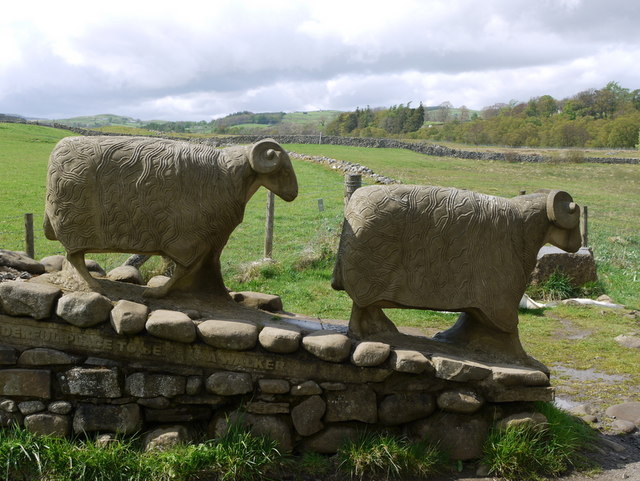Introduction
The Stone Sheep Sculpture at Low Force is a notable example of contemporary public art that harmonizes with its natural surroundings. Situated near the Low Force waterfall on the River Tees in County Durham, England, this sculpture captures the essence of the area’s pastoral heritage and its connection to the landscape. The artwork serves not only as a point of interest for visitors but also as a tribute to the agricultural traditions that have shaped the region.
Get your dose of History via Email
Historical and Cultural Context
Low Force itself is a series of small waterfalls on the River Tees, located within the North Pennines Area of Outstanding Natural Beauty (AONB). The area is steeped in geological significance and has been a site of human activity for thousands of years, from ancient Britons to Roman occupation, through to the medieval period and the industrial revolution. The surrounding landscape is characterized by rugged moorland, traditional stone-built farms, and a rich history of sheep farming. It is within this context that the Stone Sheep Sculpture finds its relevance and resonance.
The Sculpture
The Stone Sheep Sculpture is the work of a local artist, who sought to create a piece that was both reflective of the area’s natural beauty and its agricultural heritage. Crafted from local stone, the sculpture is a life-sized representation of a sheep, an animal intrinsically linked to the history and economy of the region. The choice of material ensures that the sculpture blends seamlessly with the landscape, appearing almost as if it were a natural formation.
Symbolism and Significance
The sculpture is not merely a representation of a sheep but serves as a symbol of the enduring relationship between the land and its inhabitants. Sheep farming has been a cornerstone of life in the North Pennines for centuries, shaping the landscape, culture, and economy of the area. The sculpture pays homage to this tradition, standing as a testament to the hard work and dedication of the farming communities that have sustained this way of life through generations.
Reception and Impact
Since its installation, the Stone Sheep Sculpture has become a beloved landmark for both locals and visitors. It not only adds an element of interest to the scenic walk along the River Tees but also prompts reflection on the area’s heritage. The sculpture has been praised for its ability to blend art with the natural environment, encouraging a deeper appreciation for both.
Conclusion
The Stone Sheep Sculpture at Low Force is more than just a piece of public art; it is a meaningful reflection on the relationship between humans and the natural world. By commemorating the agricultural traditions of the North Pennines, the sculpture enriches the cultural landscape of the area, offering a poignant reminder of the past while standing firmly in the present. Through its simple yet powerful form, it invites onlookers to contemplate the enduring bonds between land, animal, and human, making it a significant addition to the heritage of the region.

